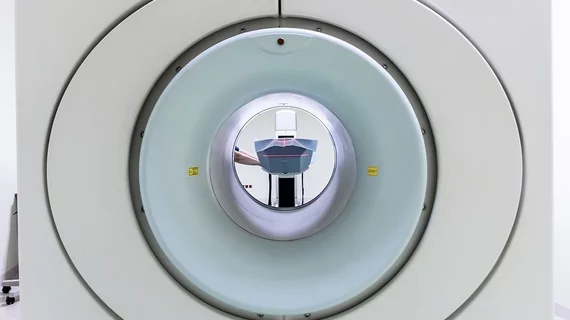Most radiologists have the same approach to prostate MRI exams, with a few technical challenges
Most academic radiologists have a similar approach to performing and interpreting prostate MRI exams, but there are a few notable shortcomings, according to survey results shared Wednesday
For instance, a majority of physicians perform exams at 3 Tesla without an endorectal coil, and interpret images using PI-RADS version 2. Fewer, however, followed the techniques outlined in the reporting and data system, leading to imaging quality and interpretation challenges, researchers explained in AJR.
Past research has demonstrated differences in radiologists’ compliance with technical imaging parameters in PI-RADS v2, but the causes aren’t readily apparent. The authors hypothesized that protocol differences between MRI systems and technologists’ varying skill levels may be contributing factors.
But as demand for prostate MRI continues to rise, Silvia D. Chang, MD, a radiologist at Vancouver General Hospital, and colleagues, said changes are needed to maintain high exam standards.
“Our study adds to the data that stronger efforts to educate radiologists regarding adoption of minimal technical standards are required to produce higher-quality examination, which in turn should result in improved interpretation and outcomes,” the authors added. “Implementation of these standards should also be considered for site accreditation."
The researchers sent an online survey regarding MRI practice patterns and challenges to 1,446 Society of Abdominal Radiology members. Out of the 212 responses, 65% were academic abdominal specialists with 1-5 years of experience (52%) in reporting prostate MRI.
Additionally, 58% performed the imaging exam at 3T, without an endorectal coil (83%). A majority (79%) acquired dynamic contrast-enhanced images with a temporal resolution of fewer than 10 seconds.
Furthermore, 92% said they used PI-RADS v2 for interpreting exams, but 18% did not use b value of 1400 s/mm2 or larger, while 9% used a temporal resolution greater than 10 seconds. Chang et al said it is “unclear why these numbers were not larger.”
The authors said their findings should be used to enhance radiologists’ prostate MRI training.
“In conjunction with the explosive demand for prostate MRI, this information is valuable because it will help in [the] development of impactful educational programs,” Chang et al. added. “These teaching resources should be designed to ensure proper training with a conscious effort to maintain quality.”

